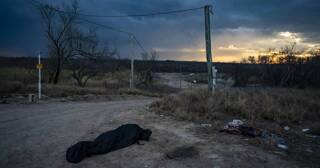Global Warming Nontroversy of the Day
Right wing bloggers and climate “skeptics” are ranting and fuming about “the global warming scandal of the century,” after the email server of one of the UK’s leading climate research centers was hacked, and thousands of emails were stolen and promptly posted all over the web. (Which is, of course, completely illegal.)
However, reading the summaries that these folks have posted, such as the one in this almost comically exaggerated article by Telegraph writer James Delingpole, one thing stands out — there’s no there there. There’s no evidence of a conspiracy to commit massive fraud. There are no admissions of faking data. The worst thing they’ve dug up out of thousands of emails is this one referring to a “trick” used to adjust warming data, which Delingpole dramatically labels “Manipulation of evidence:”
I’ve just completed Mike’s Nature trick of adding in the real temps to each series for the last 20 years (ie from 1981 onwards) amd from 1961 for Keith’s to hide the decline.
“Trick,” of course, can also mean “an effective technique,” but if you were desperately hunting for anything smear-worthy, I suppose the word would stand out.
RealClimate has responded to this stolen email nontroversy here: The CRU hack.
Since emails are normally intended to be private, people writing them are, shall we say, somewhat freer in expressing themselves than they would in a public statement. For instance, we are sure it comes as no shock to know that many scientists do not hold Steve McIntyre in high regard. Nor that a large group of them thought that the Soon and Baliunas (2003), Douglass et al (2008) or McClean et al (2009) papers were not very good (to say the least) and should not have been published. These sentiments have been made abundantly clear in the literature (though possibly less bluntly).
More interesting is what is not contained in the emails. There is no evidence of any worldwide conspiracy, no mention of George Soros nefariously funding climate research, no grand plan to ‘get rid of the MWP’, no admission that global warming is a hoax, no evidence of the falsifying of data, and no ‘marching orders’ from our socialist/communist/vegetarian overlords. The truly paranoid will put this down to the hackers also being in on the plot though.
Instead, there is a peek into how scientists actually interact and the conflicts show that the community is a far cry from the monolith that is sometimes imagined. People working constructively to improve joint publications; scientists who are friendly and agree on many of the big picture issues, disagreeing at times about details and engaging in ‘robust’ discussions; Scientists expressing frustration at the misrepresentation of their work in politicized arenas and complaining when media reports get it wrong; Scientists resenting the time they have to take out of their research to deal with over-hyped nonsense. None of this should be shocking.
Read the whole thing; they make more excellent points about the absurdly exaggerated denialists’ claims.
Here’s their response to the “trick” comment:
No doubt, instances of cherry-picked and poorly-worded “gotcha” phrases will be pulled out of context. One example is worth mentioning quickly. Phil Jones in discussing the presentation of temperature reconstructions stated that “I’ve just completed Mike’s Nature trick of adding in the real temps to each series for the last 20 years (ie from 1981 onwards) and from 1961 for Keith’s to hide the decline.” The paper in question is the Mann, Bradley and Hughes (1998) Nature paper on the original multiproxy temperature reconstruction, and the ‘trick’ is just to plot the instrumental records along with reconstruction so that the context of the recent warming is clear. Scientists often use the term “trick” to refer to a “a good way to deal with a problem”, rather than something that is “secret”, and so there is nothing problematic in this at all. As for the ‘decline’, it is well known that Keith Briffa’s maximum latewood tree ring density proxy diverges from the temperature records after 1960 (this is more commonly known as the “divergence problem”–see e.g. the recent discussion in this paper) and has been discussed in the literature since Briffa et al in Nature in 1998 (Nature, 391, 678-682). Those authors have always recommend not using the post 1960 part of their reconstruction, and so while ‘hiding’ is probably a poor choice of words (since it is ‘hidden’ in plain sight), not using the data in the plot is completely appropriate, as is further research to understand why this happens.












